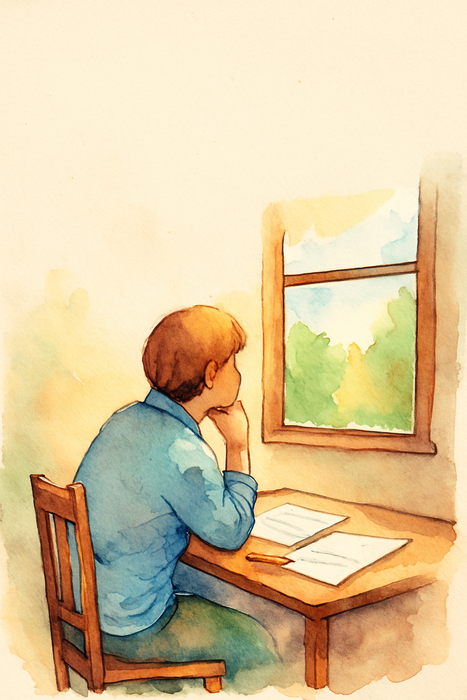Often when I really need to get something done I find that I don’t. Having spoken with many people, I find that there is a familiar set of circumstances: the creeping delay, the mental circling, the sudden urge to tidy the kitchen instead of starting the task that actually matters. Procrastination is often framed as laziness or poor time management, yet what if it’s more about emotion than organisation?
A useful perspective comes from the short YouTube video Why We Procrastinate, which highlights that avoidance is not necessarily a failure of willpower but a form of emotional regulation. When faced with a challenging or uncertain task, our nervous system interprets it as a potential threat, triggering anxiety or discomfort. To reduce that discomfort, we distract ourselves — temporarily relieving the feeling but keeping the task unresolved.
The Yerkes-Dodson Law and its limits
In the video, the model used to explain motivation is the Yerkes-Dodson Law (Yerkes & Dodson, 1908), which suggests that performance increases with physiological or mental arousal up to an optimal point — beyond which it declines. In other words, a little stress can help us focus, but too much overwhelms us.
This idea neatly fits our experience: a looming deadline can sharpen attention, yet constant pressure can paralyse. The model has limitations. Its simplicity masks the complexity of human emotion, context, and personality. Later research (Teigen, 1994) shows that the relationship between arousal and performance is not a tidy curve but depends on the type of task and the individual’s coping capacity. For complex or creative tasks, even moderate stress may inhibit insight or reflection. Moreover, what counts as “optimal arousal” is deeply personal and shaped by past experience — particularly trauma, neurodivergence, and attachment style.
So, while the Yerkes-Dodson Law gives us a starting point, it may be more accurate to think of procrastination not as being “below the curve” of motivation but as a self-protective response to emotional overload.
Moving from avoidance to approach
Recognising procrastination as emotional avoidance opens up kinder and more effective strategies. Instead of asking “Why can’t I just do it?”, we might ask “What am I feeling right now that makes this hard?” Common experiences include fear of failure, fear of success, perfectionism, or shame about not being “good enough”.
Some gentle ways to respond include:
- Name the emotion. Simply noticing anxiety or resistance without judgment can reduce its power.
- Start small. Break the task into a minimal step — opening the document, writing one line, or setting a timer for ten minutes.
- Adjust expectations. “Good enough” work completed calmly is often better than perfect work done in panic.
- Self-compassion. Research by Sirois (2014) shows that people who treat themselves kindly after procrastinating are more likely to re-engage with tasks.
- Body awareness. Slow breathing or movement helps calm the nervous system, supporting re-engagement with the task.
Procrastination is not a flaw but a signal. It tells us there’s something in our emotional landscape that needs attention before we can move forward. By listening to it — rather than fighting it — we can transform avoidance into understanding, and delay into gentle progress.
References
- Sirois, F. M. (2014). Procrastination and stress: Exploring the role of self-compassion. Self and Identity, 13(2), 128–145. https://doi.org/10.1080/15298868.2013.763404
- Teigen, K. H. (1994). Yerkes-Dodson: A law for all seasons. Theory & Psychology, 4(4), 525–547. https://doi.org/10.1177/0959354394044004
- Yerkes, R. M., & Dodson, J. D. (1908). The relation of strength of stimulus to rapidity of habit-formation. Journal of Comparative Neurology and Psychology, 18(5), 459–482. https://doi.org/10.1002/cne.920180503
Resources
- Why We Procrastinate – YouTube
- Pychyl, T. A. (2013). Solving the Procrastination Puzzle: A Concise Guide to Strategies for Change. Penguin. ISBN: 9780698148314
- Fiore, N. (2007). The Now Habit: A Strategic Program for Overcoming Procrastination and Enjoying Guilt-Free Play. Penguin. ISBN: 9781529930658
